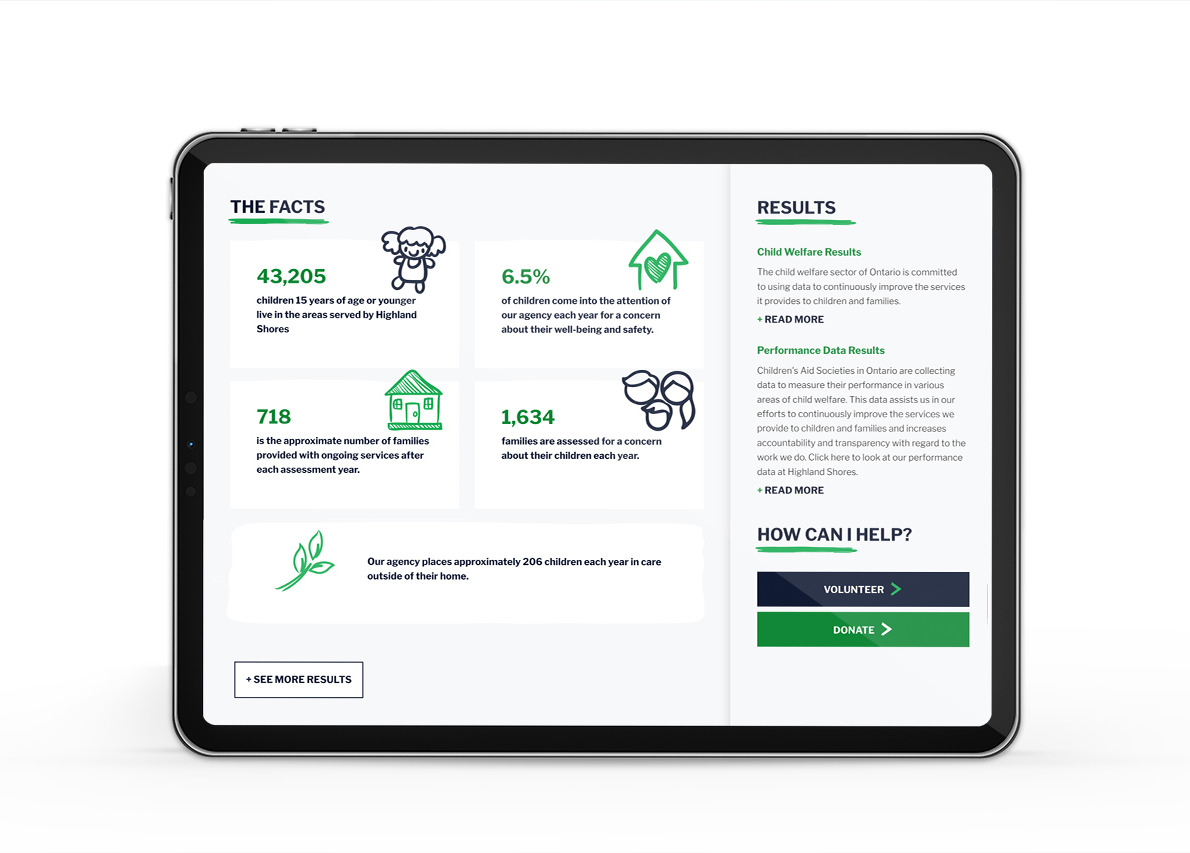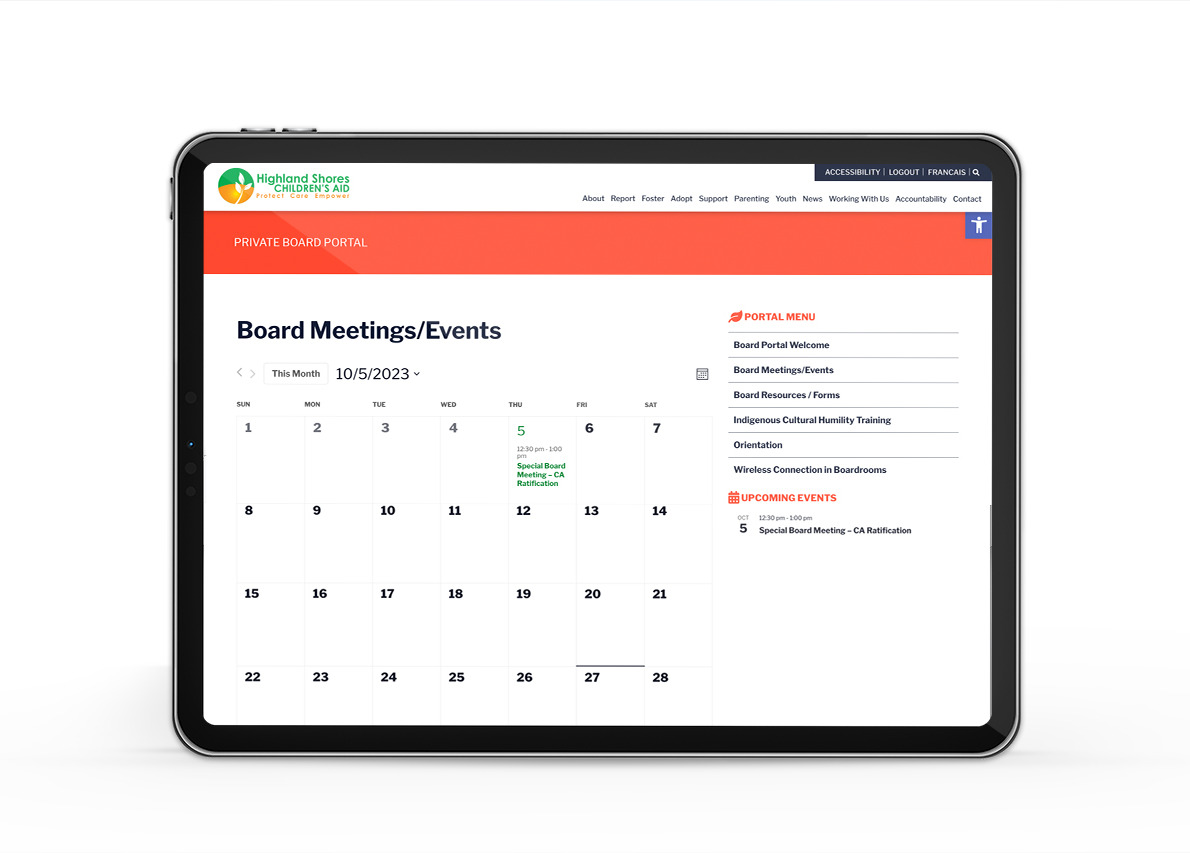
Project Summary
In 2012, we had launched a new website for the Highland Shores Children’s Aid Society to meet a unique set of goals. Fast-forward a decade later and the request for a highly accessible and mobile-friendly website using modern technologies is required to meet the standard’s of the client’s organization.
- Website developed in collaboration with multiple committees and stakeholders
- Friendly and intuitive design that can accommodate a large and diverse amount of information
- Clear doorways for priority audiences such as foster parents, volunteers, youth.
- Fully compliant with the WCAG 2.0 Level AA accessibility requirements
- Complete content management system (CMS) that would enable the posting of news, events, resource materials, volunteer opportunities
- Online eNewsletter Sign-Up
- Custom-developed secure portal where internal staff can share information regarding announcements, events, documents, contact lists, meeting agendas & minutes
The Challenge
The Highland Shores Children’s Aid Society (HSCAS) is an organization with a large variety of stakeholders, audiences, services and processes.
Goal: Serve a Wide Variety of Clients & Stakeholders
Each HSCAS client has a unique set of needs. For example, HSCAS helps foster parents work through the foster parenting process. It also helps to prepare youth for university. The website needed to serve all of these audiences simultaneously.

Goal: Raise Public Awareness & Involvement
An important element of the mandate of the HSCAS is to promote awareness and involvement in issues facing children and families in the area. It was critical that that public’s impression of the organization be both positive and consistent.

Goal: Facilitate Internal Communication Processes
At the same time, the internal structure of the organization is complex. At the time of the website redesign, the organization was in the process of amalgamating two different counties, each of which had a collection of offices totaling more than 400 staff members. The organizational structure included a central board and multiple committee groups who needed to communicate in an efficient and effective manner. Each committee and group had a different strategy for communicating. Furthermore, some of the information was highly confidential and needed to be kept private.
It was critical that the website helped to facilitate internal communication between internal teams in a manner that was both user-friendly and secure.